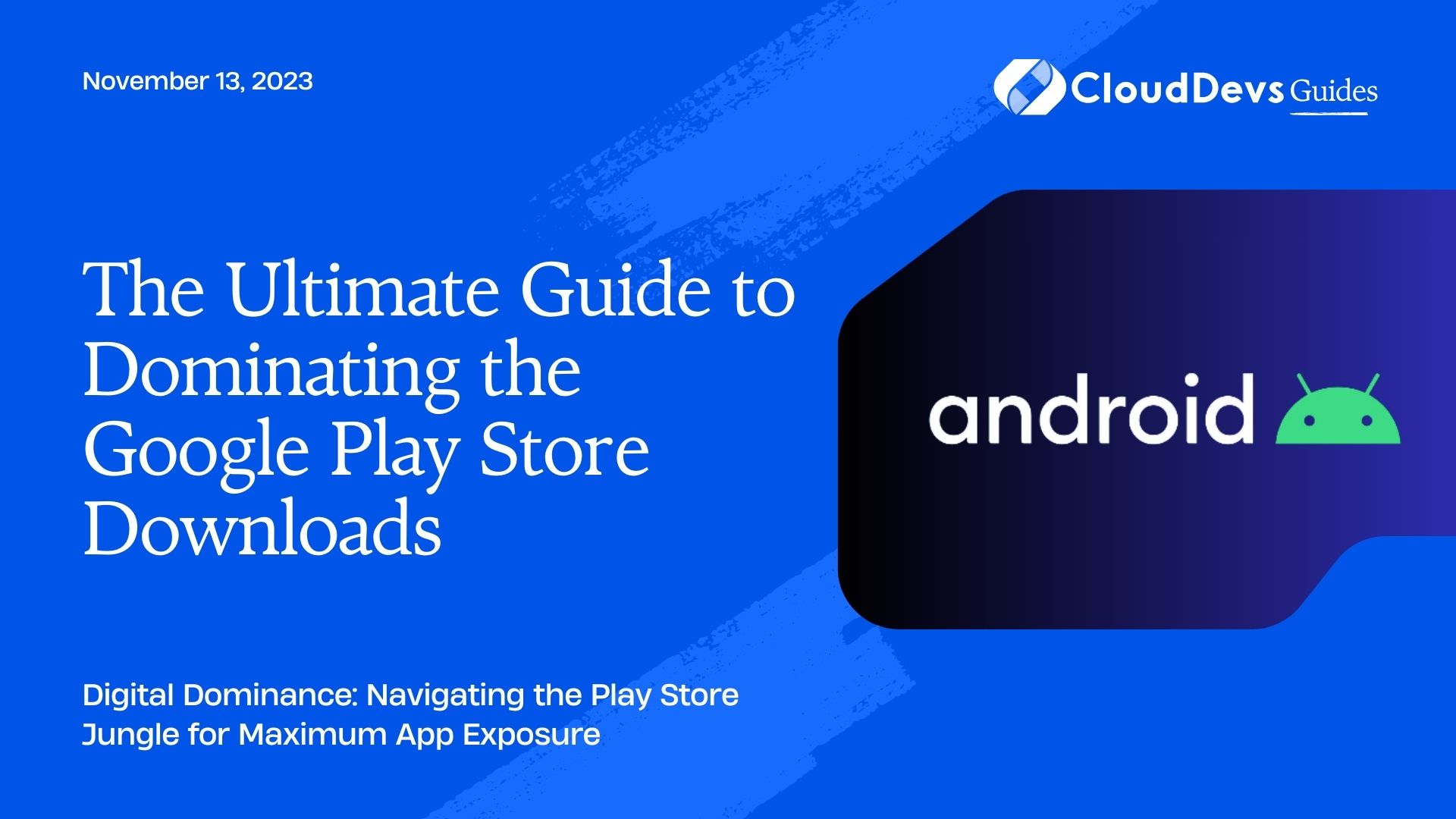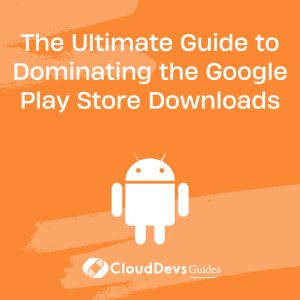The Ultimate Guide to Dominating the Google Play Store Downloads
The Android app market is a vast landscape with over 3 million apps vying for users’ attention. With such a competitive environment, merely having a well-developed app is not enough; effective marketing strategies are essential. If you’re looking to increase the download count of your app, here are some proven strategies accompanied by examples to help you break through the noise.
Table of Contents
1. Optimize for the Google Play Store (App Store Optimization)
– Keyword Research: Use tools like Sensor Tower or App Annie to identify keywords relevant to your app. Incorporate these keywords naturally in your app title, description, and back-end metadata.
Example: An app about “vegan recipes” should include terms like “plant-based,” “meat-free,” or “dairy-free” in its description.
– High-quality Screenshots and Videos: Visuals provide a first impression. Ensure they effectively convey your app’s functionality and look appealing.
Example: Angry Birds not only showcased gameplay in its visuals but also highlighted the fun and quirky characters.
2. Encourage Ratings and Reviews
– In-app Prompts: Politely remind users to rate and review after they’ve achieved certain milestones or used the app multiple times.
Example: Evernote occasionally prompts users for a review after they’ve saved a specific number of notes.
– Reply to Reviews: Engage with users who leave feedback, both positive and negative. It shows you value user input.
Example: Headspace, a meditation app, actively replies to user reviews, addressing concerns and thanking users for their feedback.
3. Leverage Social Media
– Engaging Content: Regularly post content relevant to your app or its industry. This can include tips, user testimonials, or behind-the-scenes looks.
Example: Duolingo frequently shares success stories from its users on its social media platforms.
– Influencer Collaborations: Partner with influencers in your niche to showcase your app to their followers.
Example: Calm, a relaxation app, partnered with celebrities like LeBron James to reach a broader audience.
4. Run Targeted Ads
– Facebook & Instagram Ads: With their robust targeting options, you can reach your exact audience based on interests, behaviors, and more.
Example: A fitness app can target people who have interests in topics like “gym workouts” or “healthy diets”.
– Google Universal App Campaigns: Let Google AI optimize your ads to show them to users most likely to install and engage.
Example: Candy Crush Saga used this campaign type to boost its global presence and achieve a high ROI.
5. Leverage Referral Marketing
– Incentivized Referrals: Offer users a reward for referring friends. This can be in-app
credits, premium features, or other incentives.
Example: Uber gives both the referrer and the referred a free ride or discount when a new user signs up using a referral code.
– Social Sharing Features: Embed social share buttons within your app, making it easy for users to share their experiences or achievements.
Example: Spotify users can easily share the songs or playlists they are listening to on their social media channels.
6. Localize Your App
– Translation: Ensure your app is available in multiple languages based on the regions you’re targeting.
Example: Clash of Clans is available in over a dozen languages, allowing it to tap into various markets globally.
– Cultural Customization: Modify certain elements of your app to resonate with local customs and sentiments.
Example: McDonald’s app showcases different menu items in different countries based on local preferences.
7. Engage Users with Push Notifications
– Personalization: Use data-driven insights to send customized messages to users based on their behavior or preferences.
Example: Netflix sends push notifications about newly released episodes of a show that a user has been watching.
– Timing is Key: Send notifications at times when users are most likely to engage.
Example: A coffee shop app might send out a discount notification in the early morning when people are most likely to crave a caffeine fix.
8. Offer Limited Time Promotions
– Discounts or Sales: Offer premium features of your app at a reduced price for a limited period.
Example: A paid photo-editing app might have a 50% off sale during a major holiday season.
– In-app Events: Host events or challenges that offer exclusive content or rewards.
Example: Pokémon Go often holds events where certain Pokémon appear more frequently, drawing players back into the game.
9. Collaborate with Other Apps
– Cross-Promotions: Share promotional spaces with apps that cater to similar audiences but are not direct competitors.
Example: A travel booking app might collaborate with a weather forecasting app, promoting each other to their respective user bases.
– Bundle Offers: Offer combined deals when users download two or more partnered apps.
Example: An e-book reader app and an audiobook platform might offer a discount for users who install both apps.
10. Ensure Your App Offers Value
– This might seem fundamental, but it’s the foundation of any marketing strategy. Ensure your app addresses a need or solves a problem effectively.
Example: WhatsApp gained immense popularity by offering a free, efficient, and ad-free platform for messaging, effectively addressing a primary communication need.
Conclusion
In the saturated world of Android apps, a blend of organic and paid strategies, backed by an understanding of your target audience, is crucial for success. As you implement these strategies, it’s essential to track key performance indicators (KPIs) and be prepared to pivot your approach based on data-driven insights. Remember, in the end, the most influential advocate for your app will always be a satisfied user.
Table of Contents






